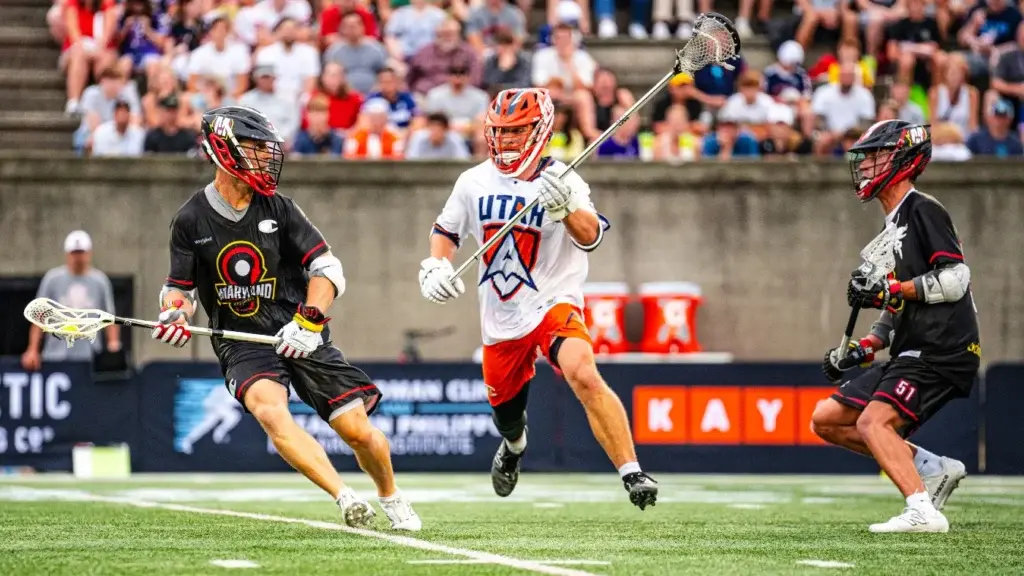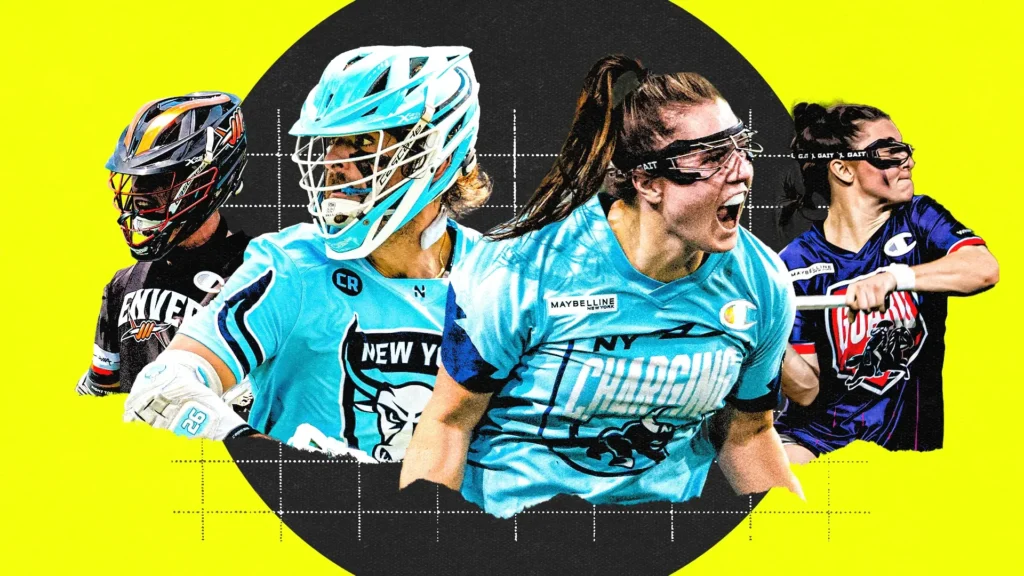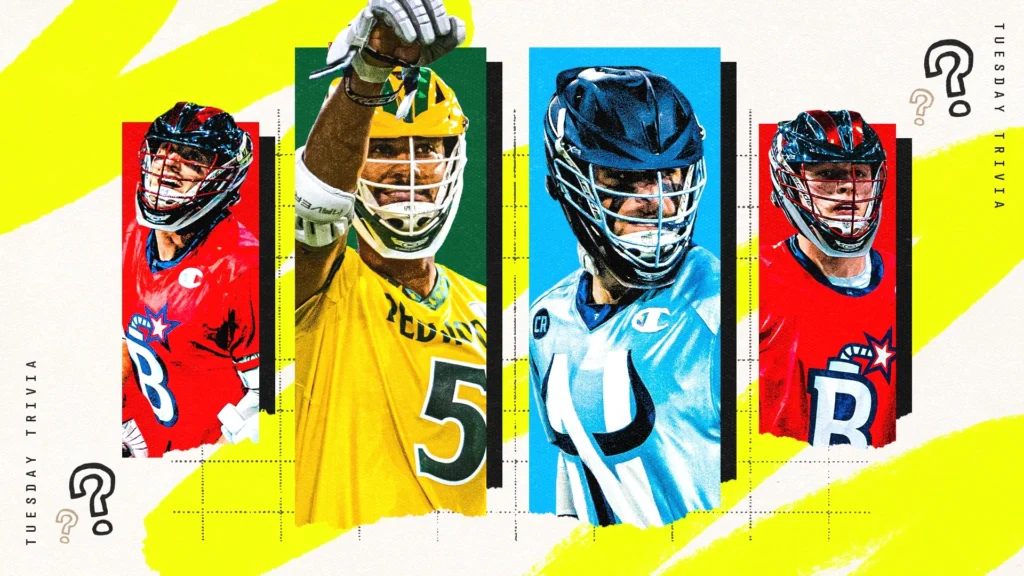
Which Whipsnakes midfielder should Archers pole in Cash App Championship?
By Zach Carey | Sep 13, 2024
The Maryland Whipsnakes midfield has been on a tear during the club’s run to the Cash App Championship. Particularly against the New York Atlas last week: Maryland midfielders scored nine of the Whips’ 12 goals in the semifinals.
“They’re playing great lacrosse,” Utah Archers head coach Chris Bates said. “Overall. I think they’ve done a nice job of meshing and figuring out strengths and weaknesses.”
Despite Tucker Dordevic’s season-ending injury, Maryland’s midfield has provided offensive balance, taking pressure off its star-studded attack and creating offense. Whether it's Levi Anderson and Colin Heacock as bruising dodgers, Adam Poitras and Ryan Conrad as lethal invert options or Mike Chanenchuk as the gunslinging stretch shooter, the Whips midfield can score in a variety of ways.
Among those five guys, there isn’t one clear must-pole player. Each of them can beat a short-stick defensive midfielder, and Maryland has done well to pinpoint favorable matchups and spam them until defenses adjust.
“Any one of those guys are threats and seasoned scorers,” Bates added.
The Archers have built a defense that can trust its shorties. Their three SSDMs are all draft picks from the past two years. After taking Connor Maher 13th overall and Piper Bond 21st in the 2023 College Draft, Utah turned around and took Beau Pederson 13th overall in 2024.
Those three have all been rock-solid additions to the Archers defense. Bond was a lockdown defender as a rookie and has performed well as Utah’s No. 1 short stick in Latrell Harris’ absence. Maher was a plug-and-play guy in Year 1 and made the title-clinching dive out at the end of last September’s Cash App Championship. Pederson, as a rookie this summer, has allowed an absurdly low 8.3% shooting percentage as the closest defender (on 3.3 shots per game). That’s the lowest mark by a whopping 8.6 percentage points.
“Those guys all do a really good job of crowding you and being physical,” Bates said. “That’s really the key in this league.”
The faith Utah has in those three is a significant benefit in this matchup. That said, it’ll be interesting to see who the Archers decide to put their long-stick midfielder on. Second-year pro Cam Wyers and veteran Jon Robbins have each had solid seasons.
Wyers has allowed 25% shooting as the closest defender (on 4.0 shots per game), while Robbins has let up 30.2% (on 4.3 shots per game). Neither is a lockdown cover guy, but the 6-foot-5 Wyers defends bruisers well while the 5-foot-9 Robbins has the foot speed to run with anybody.
Notably, Wyers missed Utah’s semifinal against the Carolina Chaos with a right ankle injury. The Loyola product is listed as questionable ahead of Sunday and, according to Bates, will likely be “a little bit of a game-time decision.”
If Wyers is out, rookie Colby Barsz would play in his absence. The fourth-round pick out of Towson has appeared in three games for the Archers this season, including the semifinal and their regular-season finale in Salt Lake City. He’s allowed just 18.2% shooting on 3.7 shots per game. It’s a small sample size, but the length Barsz has at 6-foot-5 means he can match strides and stay on hands when guarding up top.
Because Maryland has the personnel to dodge at short sticks, Utah’s decision on which Whipsnakes to pole will be paramount. So who should they look to lock down with their LSMs, and who should they trust their SSDMs to defend?
Mike Chanenchuk
The motivation for poling Chanenchuk is simple: He will make you turn and rake if you don’t.
The 11-year veteran is tied for fifth all-time in two-point goals for a reason.
“Channy is Channy,” Bates said. “You always have to know where he is because he’s dangerous and can always put the ball in the back of the net.”
Chanenchuk got the pole for the majority of the game against the Archers earlier this summer.
Utilizing the length of a pole to stay on Chanenchuk’s hands could be enough motivation to do the same thing on Sunday. He’s not the dodger he was in his prime. But playing off of him or losing him in rotations is asking to get torched by a flamethrower. With a pole on Chanenchuk, it’s a lot easier to hedge or split two off-ball and still be able to recover.
Levi Anderson
Anderson is the most imposing dodger the Maryland midfield has. The 6-foot-4, 220-pound St. Joe’s product uses a nearly unstoppable swim move to blow by short-stick defenders. It’s how he catapulted Maryland into the Cash App Championship with the overtime winner versus the New York Atlas. And it’s what makes poling him so appealing.
“Levi Anderson is a handful,” Bates said. “He’s got that swim move. And he’s not afraid of the moment. He’s going at you. Shorty on shorty, that’s a tough cover.”
Utah’s Pederson-Bond combo could be the ace in the hole for the defending champs on Sunday. The 6-foot-4, 210-pound Pederson and the 6-foot-2, 200-pound Bond are accustomed to outmuscling their opponents, and they won’t be intimidated by Anderson’s size. Pederson is a rare specimen who can both run with Anderson and match his level of physicality.
If they do struggle to stop Anderson, shifting the pole to him is an option. Wyers or Barsz is the better matchup than Robbins from a pure size standpoint.
Ryan Conrad
Whipsnakes head coach Jim Stagnitta added Conrad via a pre-deadline trade with the Philadelphia Waterdogs. With Maryland, Conrad has scored 2.7 points per game, compared to 0.7 in his nine games with the Dogs in 2024.
“Conrad, that’s a good, solid pickup for them,” Bates said. “He’s a threat in transition, they’re inverting him. He’s a gamer. He’s won at every level. So he’s cause for concern.”
New York poled Conrad in the semifinals. Will the Archers adjust and do the same? The former Virginia Cavalier is a party starter on inverts against short sticks, and he scored a hat trick against Utah in the 2023 Cash App Championship. There’s an argument he should get a pole no matter what.
Colin Heacock
Heacock is another savvy vet. Like Anderson, he can win with size and strength at 6-foot-3, 230 pounds. But he also has a heck of a step-down shot that can punish teams that are too quick to slide off him.
“Heacock is playing very well,” Bates said. “He’s obviously a threat. A rusty hammer, a strong dude.”
Heacock is another matchup where Utah’s size in the SSDM room will pay off. Bond and Pederson can each take a shoulder from him, and Maher is no stranger to getting in an opponent’s grill.
“They’re all interchangeable enough,” Bates said. “Connor Maher, watch him cover. He wraps you, is physical and is tough.”
Adam Poitras
Poitras is the wild card. The shifty lefty has filled out the Maryland midfield this summer and can straight-up win matchups. His two fourth-quarter points against the Denver Outlaws in the quarterfinals won the Whips that game
“Coming out, we really liked him,” Bates said. “You see his skill set really has adapted well. He’s got range, he can dodge, he can run.”
Because of the other threats in Maryland’s midfield, Poitras will mostly see shorties on Sunday. But he’s proven himself capable of taking games over. If he does, Utah will have to adjust.
Conrad and Anderson are likely the two most immediate dangers against short sticks. But, really, there is no easy answer to which Maryland midfielder the Archers should pole. Game flow will probably play a role. Like any pro offense, the Whipsnakes are going to attack Utah’s shorties individually and in the picking game. So matchups will change and the Archers defense will need to adjust.
There’s a reason Utah’s defense is second in the PLL in defensive efficiency this season. The Archers have the personnel, and they have mastermind Tony Resch as the defensive coordinator. But can they contain Maryland’s revamped midfield?
Tune in to the Cash App Championship this Sunday on ABC at 3:00 p.m. ET to find out.







